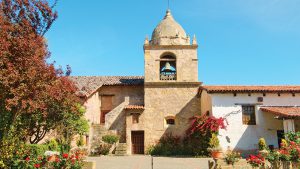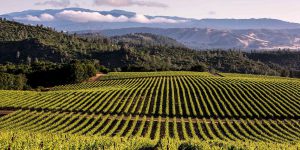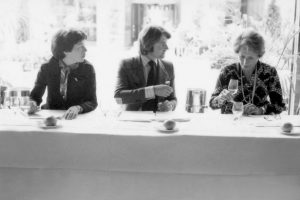
The Missions the Birthplace of Californian Wine
Winemaking in California began far before this land was a state. Franciscan monks first planted grapes in California near San Diego in 1769. They methodically moved north up the coast establishing missions and along with them vineyards that by 1823 reached from the Mexican border to Sonoma County.
Soon after, various European settlers established vineyards in California often bringing their native grape varietals, as well as their winemaking techniques. It can be argued that among these European settlers no one had a greater lasting impact on the development of wine in California than Agoston Haraszthy. Haraszthy was the first Hungarian to settle permanently in the United States and is widely considered to be the Father of California Viticulture. Wisconsin wine lovers should know that California’s father of wine was first an influential Wisconsinite. Haraszthy introduced more than 300 varieties of European grapes on the east side of the Wisconsin River near what is now the Town of Roxbury. He dug wine cellars into hillside slopes above the river that can still be seen at the Wollersheim Winery.

California Wine Vineyards
By 1890 California was producing nearly 11 million cases of wine annually. Shortly thereafter the destructive vine louse phylloxera ravaged many California vineyards just as it had in France and in Spain. Fortunately, the answer was alive in American soil as native, American rootstock is immune to phylloxera and winemakers could simply graft the European vines to the American roots.
Once recovered from the vine pest the California wine industry was crippled by a far more potent plague – the federal government. Prohibition struck a heavy blow to the wine industry in many respects. First, facilities closed down and many were dismantled for wine production in favor of other ventures. Second, the winemaking talent that was frequently passed down from one generation to another skipped a generation. Lastly, but quite importantly, the grape varieties grown had shifted toward hearty grapes with thick skins that could make the journey to all parts of the nation where home winemaking was permitted in limited quantities. Post Prohibition you would be hard-pressed to find a Cabernet or Chardonnay vine.
In the 1950s three-quarters of the wine produced was of the fortified variety in the form of cheap knock-offs of Port, Sherry, and other similar wines. By 1968 the balance of wine styles was shifting but still half of the total California wine production was dedicated to fortified wines.

Judgment of Paris
Nothing put California wines on the world stage more profoundly than the so-called Judgment of Paris. The Judgment of Paris was a wine competition organized in Paris on 24 May 1976 by Steven Spurrier, a British wine merchant. An 11-person panel, that included many of France’s top wine dignitaries, carried out two blind-tasting comparisons: one of top-quality Chardonnays from Burgundy and California and another of red Bordeaux versus California Cabernet Sauvignon. To the surprise of nearly everyone, especially the primarily French judges, California’s Stag’s Leap Wine Cellars Cabernet Sauvignon 1973 and Chateau Montelena Chardonnay 1973 took top honors. (A surprisingly good dramatic film based on this event called Bottle Shock is worthy of a viewing.)
In the years following Paris, Napa Valley has filled with wineries well exceeding 500 in sum. The estimated retail value of California wine sales was just shy of $32 billion in 2015. While the wine industry continues to be a very labor and capital-driven business, in California all is well.

Thanks Sean – never realized that the ‘Judgment of Paris’ spurred the success of California wine. I was 18 years old, and my father had just graduated as a Master of Wine !… Hope to see you again soon, Jon G
Hope to see you soon. Give me a call. I sent you an email last week.